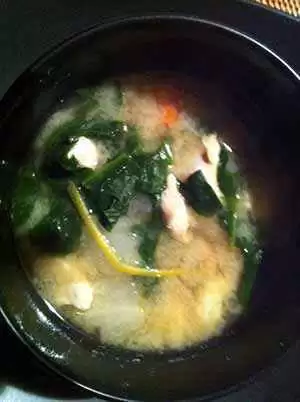I love miso soup, but whenever I've made it at home, I've never been able to get the full, deep, rich, complex flavor that I routinely have at my favorite Japanese restaurants. That's because, until recently, I hadn't discovered the secrets of dashi.
Dashi is one of the most basic cooking stocks in Japanese cuisine, and it is the secret to a truly delicious miso soup. Dashi is made by boiling dried kelp (seaweed) and dried bonito fish flakes. You can find numerous kinds of instant dashi at most Asian or Japanese markets. The more dashi you add, the richer the soup will taste.
Celiac.com Sponsor (A12):
This miso soup can be made with yellow, white or red miso paste. Yellow miso makes a sweet and creamy soup, while red miso makes a stronger, saltier soup.
 Ingredients:
Ingredients:
1/2 to 1 small chicken breast (about 2 to 4 ounces), cut into bite sized pieces
2 teaspoons dashi granules
4 cups water
3 tablespoons miso paste
1 (8 ounce) package medium or silken tofu, diced
1 tablespoon dried seaweed (optional)
2 green onions, sliced diagonally into 1/2 inch pieces
2 strips lemon peel, thinly sliced
Directions:
In a medium saucepan over medium-high heat, combine dashi granules and water.
Add chicken and bring to a boil. Skim any foam that accumulates as chicken cooks.
Reduce heat to simmer. Add seaweed. Stir in tofu.
Separate the layers of the green onions, and add them to the soup.
Simmer gently for 2 to 3 minutes and gently dissolve the miso paste into the liquid.
Serve in small bowls. Garnish with lemon rind.






Recommended Comments